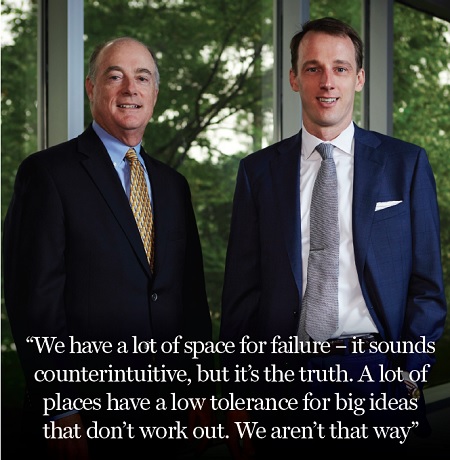
.jpg)
Cobbs Allen president Bruce Denson Jr. outlines how his agency has remained relevant for more than 130 years by targeting key demographics and geographies tice group around pizza delivery, and that just never took off. I tried to start a practice around residential housing that almost got off the ground, but fell apart during the housing crisis. We’re talking about spending serious resources for two ideas that didn’t work out, but instead of the company discouraging it, it was the opposite.
IBA: Can you explain your agency’s Guideline Process?
BD: In the 1990s, a lot of brokers moved into value-added resources, bringing claims, loss control and other consulting services in-house, and we did the same. We offered insurance and other ancillary services, but we didn’t build it into a cohesive process to help manage risk. It didn’t all fit together, so we needed a process in order to know whether these new ways of managing risk truly added value.
We took everything we offered and modeled the Guideline Process to explain how all the different pieces work together. It’s built around four classic pillars of risk management: evaluation, prevention, mitigation and transfer. It’s been helpful because it explains how all the things we do actually support the client in a more quantifiable, objective way.
IBA: How does Cobbs Allen find new talent?
BD: We believe that there is a demographic opportunity to attract the best. We are a privately held brokerage where high-valued employees can own stock; we currently have about 45 shareholders.
When we look at geographies to enter, we look at practice group opportunities, as well as areas where people with 10 to 20 years of experience are not being offered the ability to own stock in the businesses they are building. So we look for places with merger and acquisition activity, and where there aren’t many private ownership opportunities.
In much of the M&A activity we have seen, the people who have owned the firm for a long time end up walking away with a lot of money. Meanwhile, the people who are in the middle of their careers, say 35 to 45 years old, haven’t accumulated as much stock, and their firm is being sold from under them. This isn’t always palatable for many types of producers, and there should be a platform out there for those entrepreneurial types.
IBA: In your opinion, what’s the biggest issue facing insurance today?
BD: The most obvious challenge is the M&A activity. I certainly think there are some M&A platforms that are great for clients, but in general, valuations are high, and there are a lot of people cashing in their chips to the disadvantage of their second-generation producers and clients.
I think the privately held independent brokers have to figure out how to be competitive from an operational standpoint. We have to be able to produce the cash we need in order to build services for our clients and to continue to grow, while also being competitive with our offerings to employees. A bigger broker could have all the resources in the world, but you are only as good as the team you work with.

